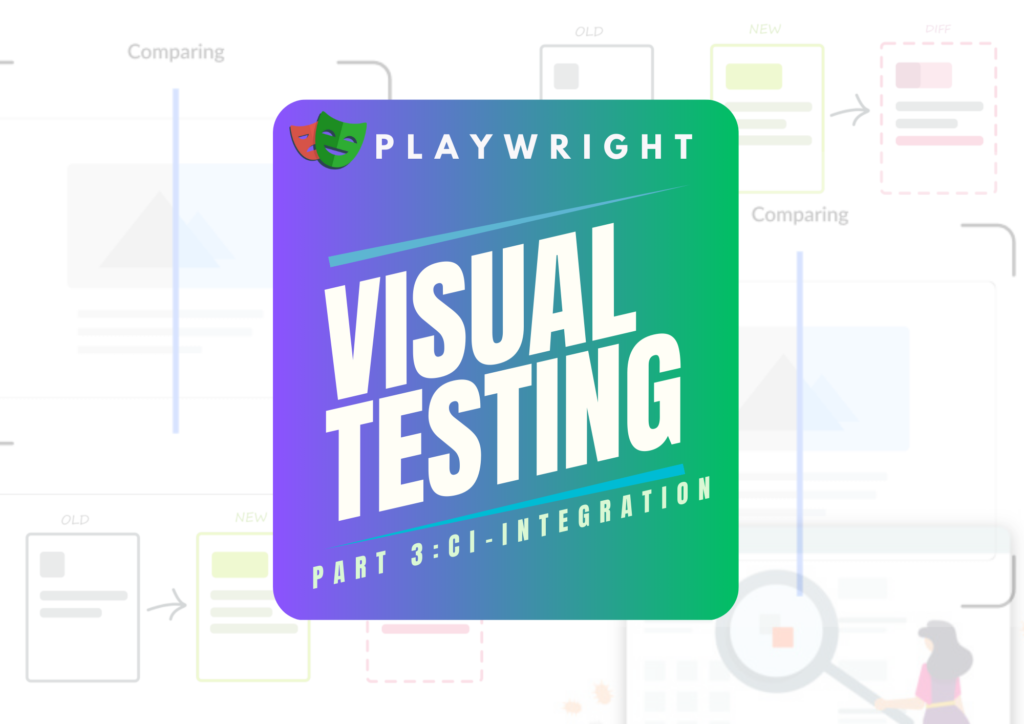
In our previous blog, “Diving Deeper into Visual Testing,” we explored advanced snapshot testing techniques to enhance the stability and reliability of WorkWave, TechWave Solutions’ flagship project. Now, let’s delve into advanced configuration and CI/CD integration to further streamline and automate our visual regression testing processes, with a focus on maintaining consistency in snapshot tests across different environments.
Revisiting TechWave Solutions
With a solid foundation in advanced visual testing, Sarah and her team at TechWave Solutions were well-equipped to catch visual bugs before they reached production. However, to keep up with the increasing complexity of WorkWave, they needed to automate and integrate these tests into their CI/CD pipeline. This would ensure consistent testing and quicker feedback, helping to maintain UI consistency across various environments.
Advanced Configuration Techniques
1. Custom Configuration for Different Environments
Liam, the senior developer, emphasised the importance of tailoring Playwright configurations for different environments, such as development, staging, and production.
Example: Custom Configuration File
// playwright.config.js
module.exports = {
......
projects: [
{
name: 'dev',
use: {
baseURL: 'https://dev.workwave.com',
headless: false,
},
},
{
name: 'staging',
use: {
baseURL: 'https://staging.workwave.com',
headless: true,
},
},
{
name: 'prod',
use: {
baseURL: 'https://www.workwave.com',
headless: true,
},
},
],
};2. Advanced Reporter Configuration
Sarah highlighted the importance of detailed reporting for better insights into test results. Playwright supports various reporters, including JSON and HTML.
Example: Configuring Multiple Reporters
// playwright.config.js
module.exports = {
......
reporter: [
['list'],
['json', { outputFile: 'test-results/test-results.json' }],
['html', { outputFolder: 'test-results/report', open: 'never' }],
['junit', { outputFile: 'test-results/results.xml' }],
],
};3. Storing baseline Snapshots
Storing baseline snapshots ensures consistency in visual testing. These snapshots should be accessible by both local and CI environments. Hence we will set a common Snapshot Dir as below:
// playwright.config.js
module.exports = {
......
snapshotDir: '../../../snapshots'
};4. Ensuring Consistency Between Local & CI Environments with Docker
To maintain consistency between local and CI environments, it’s essential to ensure that both have the same dependencies and settings. Using Docker can help create a consistent testing environment.
Dockerfile for Playwright
Example: Dockerfile for Playwright
# Dockerfile
FROM mcr.microsoft.com/playwright:1.43.1-focal
WORKDIR /src
COPY package.json package-lock.json ./
RUN npm install
COPY . .
RUN npx playwright installDocker Compose for Visual Tests
Example: docker-compose.visual.yml
# docker-compose.visual.yml
version: '3.8'
services:
visual-test:
build:
context: .
dockerfile: Dockerfile
volumes:
- .:/srcRunning Tests Locally with Docker
To run tests locally, use the following commands:
sudo docker-compose -f docker-compose.visual.yml buildOnce image is built, Run the Container and Execute Tests
docker-compose -f docker-compose.visual.yml run --rm visual-test npx playwright test --project="staging"Running Tests on CI with GitHub Actions
Note: Before we run Visual Tests on CI, make sure all the tests has generated baseline snapshots in the /snapshots directory.
To run the tests on CI, we would need to use some CI CD tool. We will use github actions in this example as recommended by Playwright here.
Example: GitHub Actions Workflow with same playwright image version
# .github/workflows/playwright-docker.yml
name: Playwright Tests with Docker
on:
push:
branches:
- main
- 'release/*'
pull_request:
jobs:
test:
runs-on: ubuntu-latest
container:
image: mcr.microsoft.com/playwright:1.43.1-focal
steps:
- name: Checkout repository
uses: actions/checkout@v2
- uses: actions/setup-node@v4
with:
node-version: 18
- name: Install dependencies
run: npm ci
- name: Run Playwright tests
run: npx playwright test --project="staging"
env:
HOME: /rootSo, once you push your commit in the main or release/** branches, above workflow will be triggered & it will start executing testcases.
Advanced Testing Strategies
Parallel Testing
Sarah explained the importance of parallel testing to speed up the feedback loop. Playwright supports running tests in parallel by default, but it’s essential to ensure tests are independent and isolated.
Example: Enabling Parallel Testing
// playwright.config.js
module.exports = {
workers: 4, // Adjust based on your CI server capacity
// Other configurations...
};Handling Flaky Tests
To handle flaky tests, Liam showed how to configure retries and include detailed logging to diagnose issues.
Example: Configuring Retries and Logging
// playwright.config.js
module.exports = {
retries: 2,
reporter: [
['dot'],
['json', { outputFile: 'test-results.json' }],
['html', { open: 'never' }],
['junit', { outputFile: 'test-results/results.xml' }],
],
use: {
trace: 'on-first-retry', // Enable tracing for flaky tests
},
};Conclusion: Automating and Optimizing Testing Workflows
Integrating advanced configuration and CI/CD workflows significantly enhanced TechWave Solutions’ ability to maintain a reliable and consistent UI for WorkWave. By automating their testing process, they reduced manual efforts and ensured quicker feedback, ultimately leading to a more stable and high-quality product.
As they continue to refine their testing strategies, the value of automated visual testing becomes increasingly evident. For those keen on diving deeper, further exploration of advanced CI/CD configurations and test optimisation techniques is highly recommended.
Happy testing!




